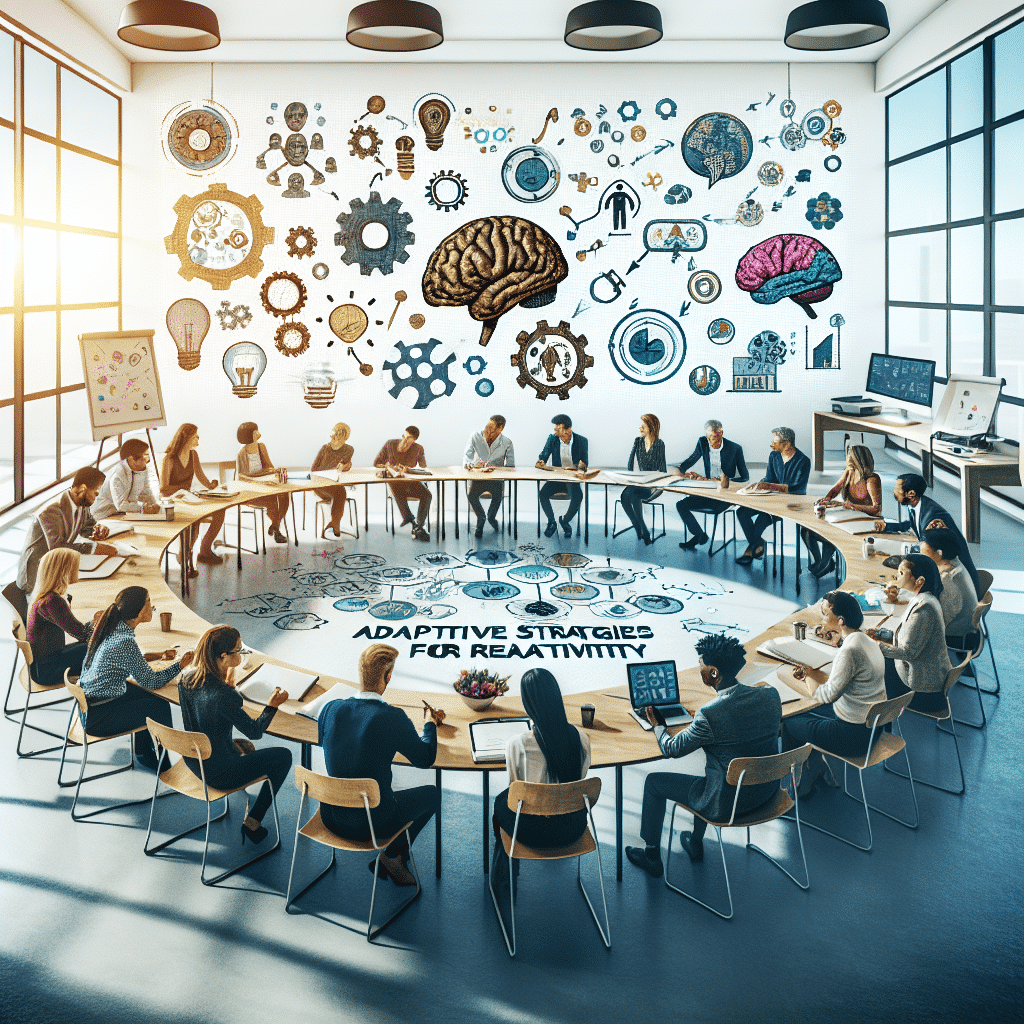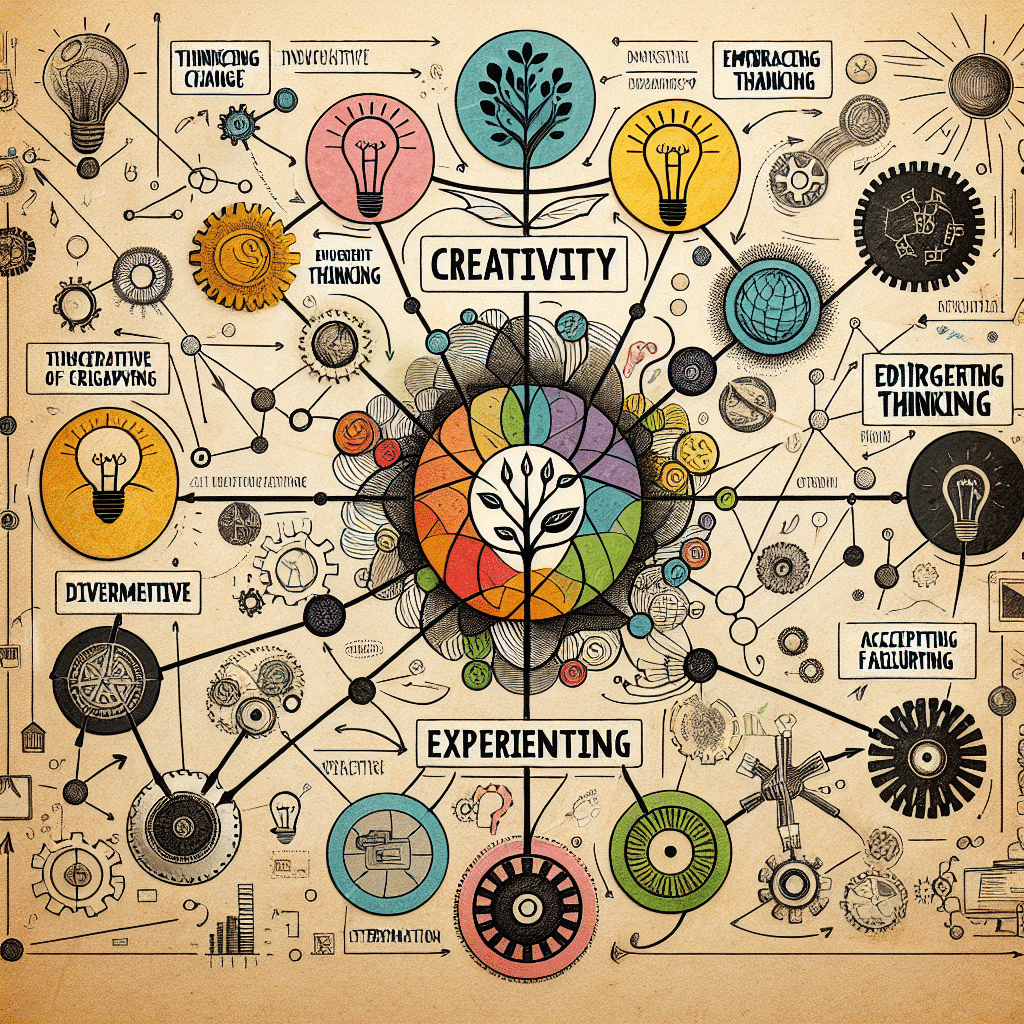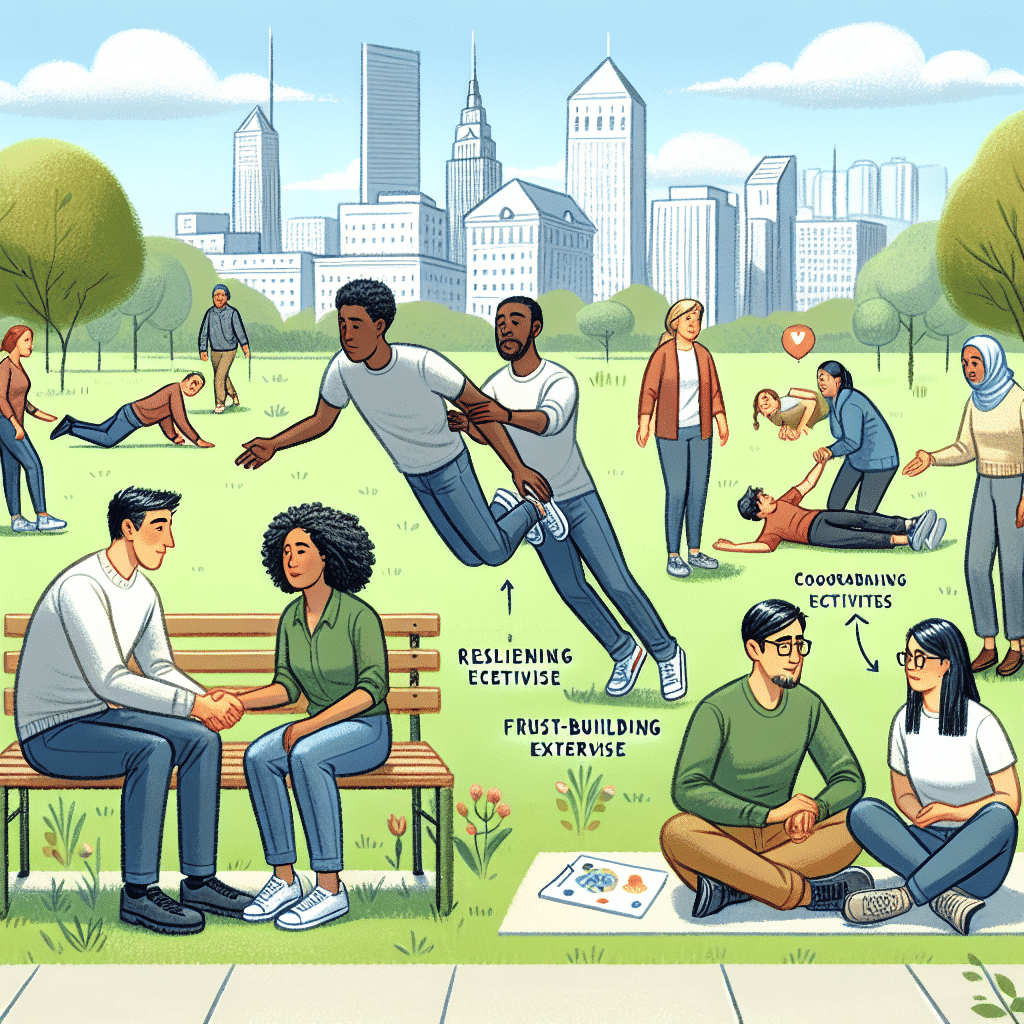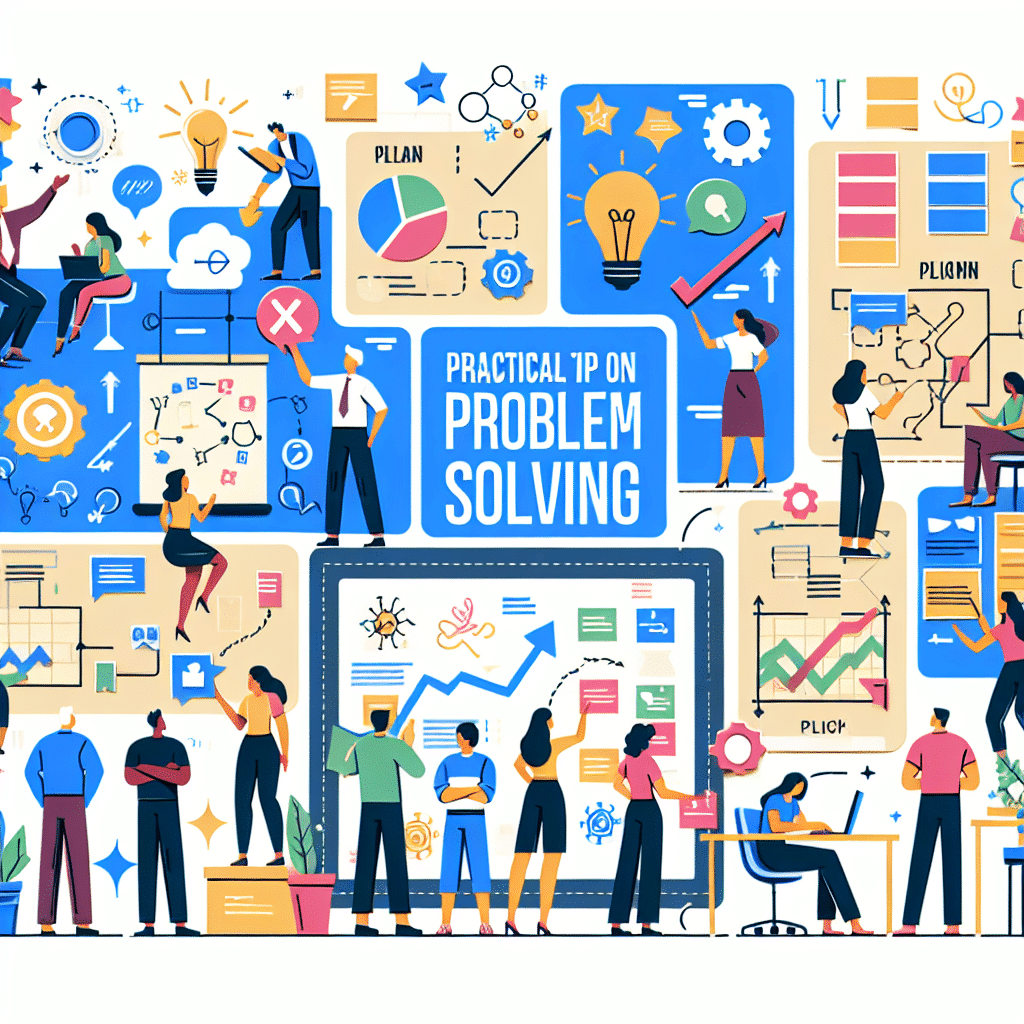
Adaptive strategies are crucial for fostering creativity in various aspects of life, whether it be in art, business, or personal endeavors. By being able to adapt and change our approach to problem-solving and creative thinking, we open ourselves up to new possibilities and solutions that we may not have otherwise considered. In this article, we will explore the importance of adaptive strategies for creativity and how they can be utilized to enhance our creative processes.
Understanding Different Adaptive Strategies
Adaptive strategies for creativity are essential for individuals to navigate the ever-changing landscape of creative work. There are various adaptive strategies that can be employed to enhance creativity and innovation. One such strategy is flexibility, which involves being open to new ideas, perspectives, and approaches. By remaining flexible, creatives can adapt to changing circumstances and explore different avenues for creativity.
Another adaptive strategy is experimentation, which involves trying out different methods, techniques, and tools to generate new ideas and solutions. By experimenting with various approaches, individuals can uncover innovative ways to express their creativity and push the boundaries of traditional norms.
Collaboration is also a key adaptive strategy for creativity, as working with others can bring fresh insights, diverse perspectives, and collective intelligence to the creative process. By collaborating with individuals from different backgrounds and disciplines, creatives can leverage the strengths of each team member to create more impactful and innovative work.
Additionally, adaptability is a crucial adaptive strategy for creativity, as it involves being able to adjust to new challenges, constraints, and opportunities in the creative process. By remaining adaptable, individuals can overcome obstacles, pivot quickly, and seize emerging trends to stay ahead in the competitive creative landscape.
Lastly, reflection is an important adaptive strategy for creativity, as it involves stepping back, reviewing past work, and learning from both successes and failures. By engaging in reflective practices, creatives can gain valuable insights, refine their skills, and constantly evolve their creative approach to produce more impactful and meaningful work.
Overall, understanding and implementing different adaptive strategies for creativity can empower individuals to overcome challenges, spark innovation, and enhance their creative output. By embracing flexibility, experimentation, collaboration, adaptability, and reflection, creatives can cultivate a dynamic and resilient creative mindset that fuels continuous growth and success in their creative endeavors.
Implementing Adaptive Strategies in Creative Processes
Adaptive strategies play a crucial role in enhancing creativity and innovation in various fields. When it comes to implementing adaptive strategies in creative processes, it is essential to understand the different approaches that can be used to foster a more dynamic and flexible environment for generating new ideas.
1. Divergent Thinking:
One adaptive strategy that can be applied in creative processes is divergent thinking. This involves exploring a wide range of possibilities and solutions to a problem, rather than focusing on one specific answer. By encouraging divergent thinking, individuals can open up new avenues for creativity and innovation.
2. Collaboration:
Collaboration is another adaptive strategy that can enhance creativity in a team setting. By working together with diverse perspectives and skills, individuals can leverage each other’s strengths and experiences to come up with innovative solutions. Collaborative efforts can lead to a more holistic approach to problem-solving and promote creative thinking.
3. Experimentation:
Experimentation is key to implementing adaptive strategies in creative processes. By trying out new ideas, techniques, and approaches, individuals can push the boundaries of traditional thinking and discover unique solutions. Encouraging experimentation allows for a more iterative and open-minded approach to creativity.
4. Flexibility:
Flexibility is essential when implementing adaptive strategies in creative processes. Being willing to adapt, pivot, and change direction when necessary can lead to breakthrough moments and innovative ideas. Embracing flexibility allows individuals to navigate uncertainties and explore new possibilities with an open mind.
5. Reflection:
Reflection is a critical component of implementing adaptive strategies in creative processes. Taking the time to evaluate past experiences, successes, and failures can provide valuable insights for future endeavors. By reflecting on creative processes, individuals can learn from their mistakes and refine their approaches for better outcomes.
Overall, implementing adaptive strategies in creative processes can lead to increased innovation, collaboration, and problem-solving capabilities. By incorporating divergent thinking, collaboration, experimentation, flexibility, and reflection into creative endeavors, individuals can foster a more dynamic and creative environment for generating new ideas and solutions.

Overcoming challenges in using adaptive strategies
While adaptive strategies are instrumental in enhancing creativity, there are challenges that individuals may face when trying to implement them in their creative processes. These challenges can hinder the effectiveness of adaptive strategies and impede the overall creative output. Here are some common challenges and ways to overcome them:
Resistance to change:
One common challenge in using adaptive strategies is resistance to change. People are often comfortable with familiar ways of working and may be hesitant to try new approaches. To overcome this challenge, it is important to emphasize the benefits of adaptive strategies and how they can lead to more innovative and successful outcomes. Encouraging open-mindedness and a willingness to experiment can help individuals overcome their resistance to change.
Lack of resources:
Another challenge in implementing adaptive strategies is a lack of resources, such as time, budget, or access to technology. In such cases, individuals can explore alternative resources or find creative solutions to work within their constraints. Collaboration with others who may have access to additional resources can also be beneficial in overcoming this challenge.
Fear of failure:
Fear of failure can also hinder the implementation of adaptive strategies. People may be afraid to take risks or try new approaches out of fear of making mistakes. To address this challenge, it is important to create a supportive environment where individuals feel comfortable experimenting and learning from failures. Emphasizing the value of failure as a learning opportunity can help individuals overcome their fear and embrace adaptive strategies.
Lack of training or experience:
Some individuals may struggle with implementing adaptive strategies due to a lack of training or experience in using them. In such cases, seeking out opportunities for learning and development can be beneficial. Training programs, workshops, or mentorship opportunities can help individuals build their skills and confidence in using adaptive strategies in their creative processes.
By addressing these challenges and finding ways to overcome them, individuals can effectively implement adaptive strategies in their creative endeavors and unlock new levels of innovation and success.
Benefits of using adaptive strategies for creativity
Implementing adaptive strategies in creative processes can offer numerous benefits to individuals and organizations seeking to enhance their innovative capabilities. These strategies allow for flexibility, resourcefulness, and resilience when faced with challenges or obstacles in the creative process.
Enhanced problem-solving skills
Adaptive strategies help individuals think outside the box and explore new possibilities when tackling creative problems. By being open to different approaches and solutions, individuals can develop their problem-solving skills and come up with innovative ideas that may not have been considered otherwise.
Increased creativity and innovation
Adopting adaptive strategies can lead to increased creativity and innovation in the creative process. By adapting to changing circumstances and being willing to experiment with new ideas, individuals can push the boundaries of what is possible and create truly groundbreaking work.
Improved collaboration and teamwork
Adaptive strategies can also foster collaboration and teamwork among individuals working on creative projects. By being open to feedback, input, and different perspectives, team members can leverage their collective creativity to achieve common goals and produce superior results.
Greater resilience and adaptability
By incorporating adaptive strategies into their creative processes, individuals and organizations can become more resilient and adaptable in the face of challenges and setbacks. This resilience allows them to remain flexible and bounce back from failures, ultimately leading to continued growth and success in their creative endeavors.
Overall, the benefits of using adaptive strategies for creativity are clear. By embracing flexibility, resourcefulness, and innovation in the creative process, individuals and organizations can unlock their full creative potential and achieve remarkable results that would not have been possible otherwise.

Summary
Adaptive strategies play a crucial role in fostering creativity by allowing individuals to navigate challenges and generate innovative solutions. Understanding and implementing different adaptive strategies can lead to an enhanced creative process with a higher likelihood of success.
Despite potential challenges in using adaptive strategies, such as resistance to change or fear of failure, the benefits far outweigh the drawbacks. By persevering and staying open to new approaches, individuals can unlock their full creative potential.
In conclusion, incorporating adaptive strategies into creative endeavors can lead to increased flexibility, problem-solving abilities, and overall success in generating groundbreaking ideas and products.






